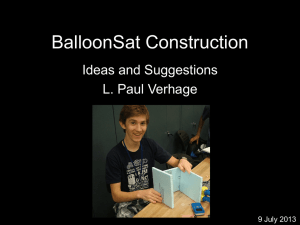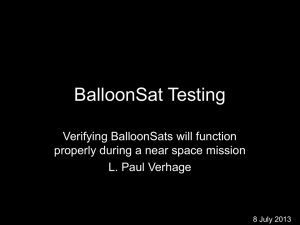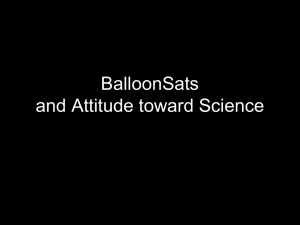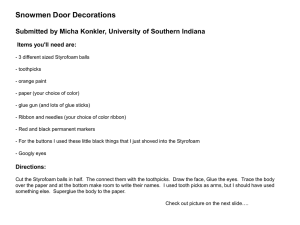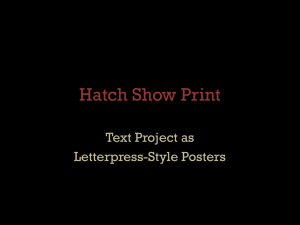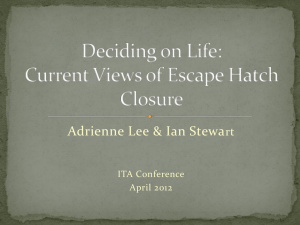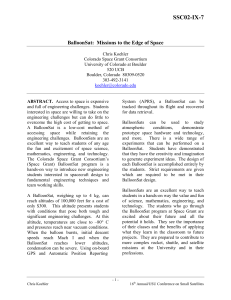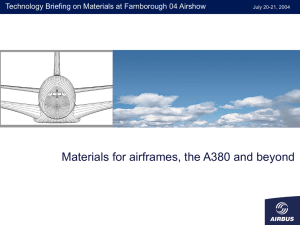BalloonSat Construction
advertisement
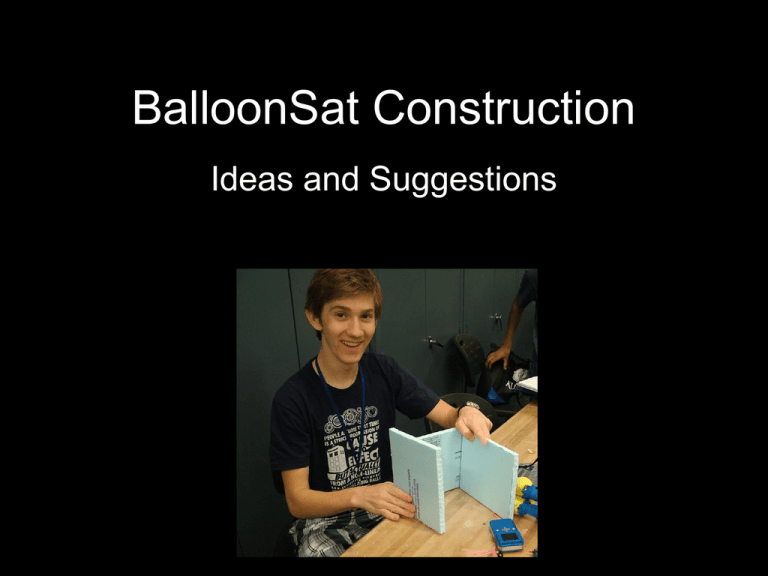
BalloonSat Construction Ideas and Suggestions What is a BalloonSat? • • • • • Functional Model of a Satellite Carried by Balloon to at Least 60,000 Feet Operates Experiments Collects Data Designed for Launch and Descent Conditions • Exposed to the Near Space Environment Possible Design Limitations • Maximum Weight • Experiment Requirements • Minimum Amount of Data and Frequency of Data Collection • Available Design and Build Time • Maximum Dimensions Tools • • • • • • • • • • Exacto Knife Metal Straight Edge Right Angle (Triangle or T-Square) Ball Point Pen Felt-tip Marker Hot Glue Gun and Glue Sticks Files/Emory Board Circle Template Screwdriver/pliers Hot Knife Materials • • • • • • Styrofoam (various thicknesses) Plastic Tubes Plastic Lids Tape Rubber Bands Nuts, Bolts, and Washers Design Considerations • • • • • • • • • • • • Sufficient volume for datalogger and experiments Securely attach components Multiple plastic tubes for tether lines Easy access to interior through hatch(es) Hatch placement on the side of the airframe, not the top where tethers are located Quick and simple hatch closure, using rubber bands Minimize airframe openings to minimize cold air infiltration Minimize bolt hole diameter and use washer and nylock Bolt camera to the airframe Add a battery enclosure No window over camera opening Must function during all phases of the mission Keep in Mind • • • • Be aware of design specifications Paper design before cutting Measure twice, cut once Make slots for plastic tubing rather than gluing to surface • Watch glue temperature, don’t melt Styrofoam • Styrofoam has thickness • Let function determine shape of BalloonSat Use a Metal Straight Edge • Wood and plastic rulers get nicked and the lines aren’t as straight Use a Sharp Exacto Knife Rough Edge vs Smooth Edge What angle is the Exacto knife held while cutting? Files and Emory Board • Smoothes and shapes • Don’t inhale Styrofoam dust Cutting Slots • Two parallel lines • Chip out and file flat Styrofoam has Thickness • Take Styrofoam thickness into account when designing the airframe Embed Tubes • Embed and glue into place for strength • Interior slots for tether tubes and exterior slots for hatches Extend Tether Tubes to Airframe Face • Tubes protect Styrofoam from being cut by tether Include Battery Box • Confine battery so it doesn’t bounce into instruments inside the BalloonSat • Add block of foam rubber inside battery box to fill empty volume and absorb motion Use Four Tether Tubes • BalloonSats spin less when they have more than one tether line One or Two Hatches? • Can be easier to reach into a BalloonSat with two hatches Permanent Airframe Holes • Passes bolts and rubber bands through wall • Insert and glue a plastic tube Alignment Blocks on Hatches • Positive lock • Prevents hatch from sliding around Hatch Closure • Stretch rubber band over hatch and wrap around tube extending from airframe Wrap Airframe in Tape • Compression helps hold airframe together • Adds color to BalloonSat Colored Mailing Tape • Lighter than aluminum duct tape • Multiple colors Plastic Lids can Shield Sensors from Direct sunlight • Bolt to airframe • Add air openings Cut Open Tubing • Cutting away the tape covering tubes makes it easier to pass the tether Camera Lens Opening • Make larger than lens to account for camera’s angle of view • Make openings for light meter (if necessary) Darken Camera Openings • May prevent glare Testing • • • • • Weight Test Shake Test Drop Test Cold Test Function Test Tethering BalloonSats • Use hook to pull tether through tube Tethering BalloonSats • Use split rings to prevent tether from pulling out Tethered BalloonSats The Mission Begins Data Analysis
